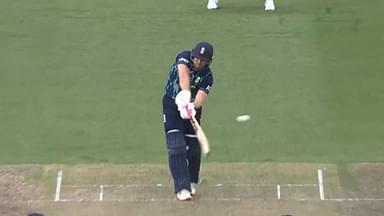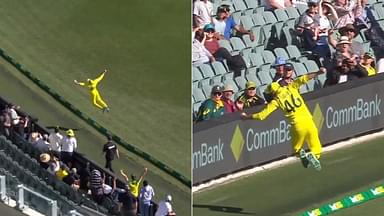Soft Signal in cricket: The much-debated rule of cricket remained the highlight of the Indian innings at the Narendra Modi Stadium.
Advertisement
During the fourth T20I of the ongoing England’s tour of India in Ahmedabad, India batsman Suryakumar Yadav’s dismissal became the topic of discussion.
Replacing injured Ishan Kishan in the Playing XI tonight, Yadav came in to bat at No. 3 in the fourth over. Yadav, who hit a six off Jofra Archer on the first ball that he faced in international cricket, went on to score his maiden T20I half-century in his debut innings to impress one and all.
It was on the second delivery of the 14th over that Yadav tried to sweep England all-rounder Sam Curran only to walk back to the pavilion. While England’s Dawid Malan gave the impression of grabbing a clean boundary catch initially, replays showed a different picture.
What is Soft Signal in cricket?
In the process of completing a catch, Malan fell forward only to create doubts over the catch. With his fingers not being completing under the ball, there was a general notion that the ball had touched the ground.
With the on-field umpire unsure of the dismissal, he referred it to third umpire Virender Sharma. Having said that, an on-field umpire has to present a “soft signal” before asking the third umpire to intervene. A “soft signal” is nothing but a decision which an on-field umpire gives on the basis of a real-time observation before referring a decision to the third umpire.
While the “soft signal” aims at giving more authority to on-field umpires, it also puts them in a difficult position for it is impossible to come to a conclusive decision with a naked eye in certain cases. Another reason why terms such as “soft signal” and “conclusive evidence” face flak is them being subjective to individuals on most occassions.
Following the rules, the on-field umpire ruled Yadav out before referring the decision to the third umpire. Sharma, the man who mattered the most in this case, had to have a conclusive evident before overruling the on-field umpire’s decision.
Despite watching multiple replays from various angles, Sharma was unable to find a conclusive evidence which would have made it clear for him that the ball had touched the ground. As a result, Sharma decided to back the on-field umpire’s decision of ruling the batsman out.
Suryakumar Yadav catch allures severe criticism for Virender Sharma
How can this be out. When you are not sure whether the ball was taken cleanly after watching so many replays using top class technology and still go by the soft signal given by the on-field umpire. I think this rule needs to be revisited and changed. #INDvsENG pic.twitter.com/b5XMdH8qEz
— VVS Laxman (@VVSLaxman281) March 18, 2021
Sack the Umpire. If this is OUT then you need to change all the rules of cricket. Unpardonable. #IndvEng @surya_14kumar
— Vikrant Gupta (@vikrantgupta73) March 18, 2021
Third umpire while making that decision. #INDvENGt20 #suryakumar pic.twitter.com/JJp2NldcI8
— Virender Sehwag (@virendersehwag) March 18, 2021
Cracked off on the timeline with that catch! 😳
Athers totally right on commentary.
The issue is with the soft signal given from distance. 3rd umpire needs conclusive evidence to overturn. Had to give it out.
Malan wouldn’t have known a lot about it taking it at speed.
— Charles Dagnall (@CharlesDagnall) March 18, 2021
For more cricket-related news, click here.







